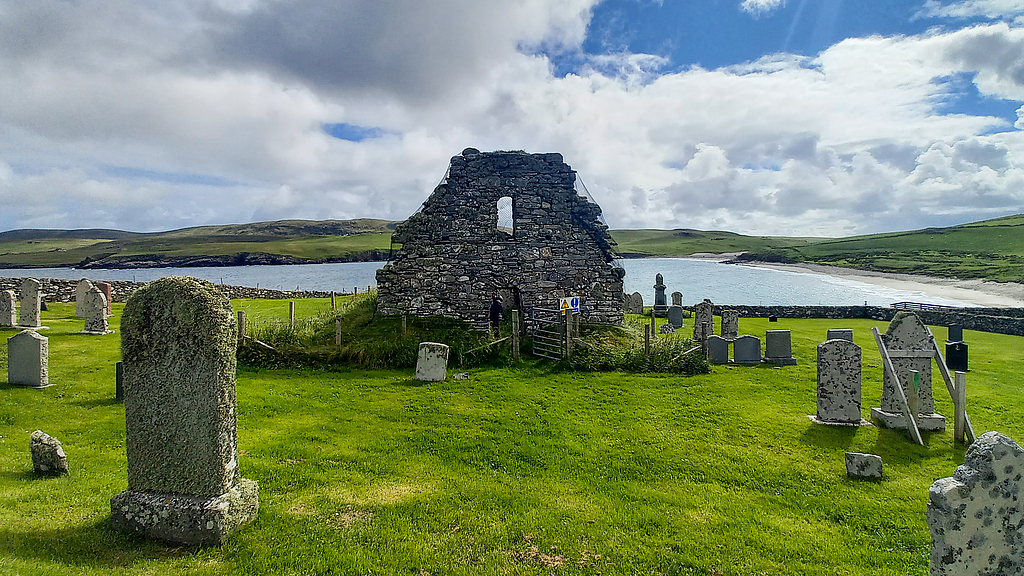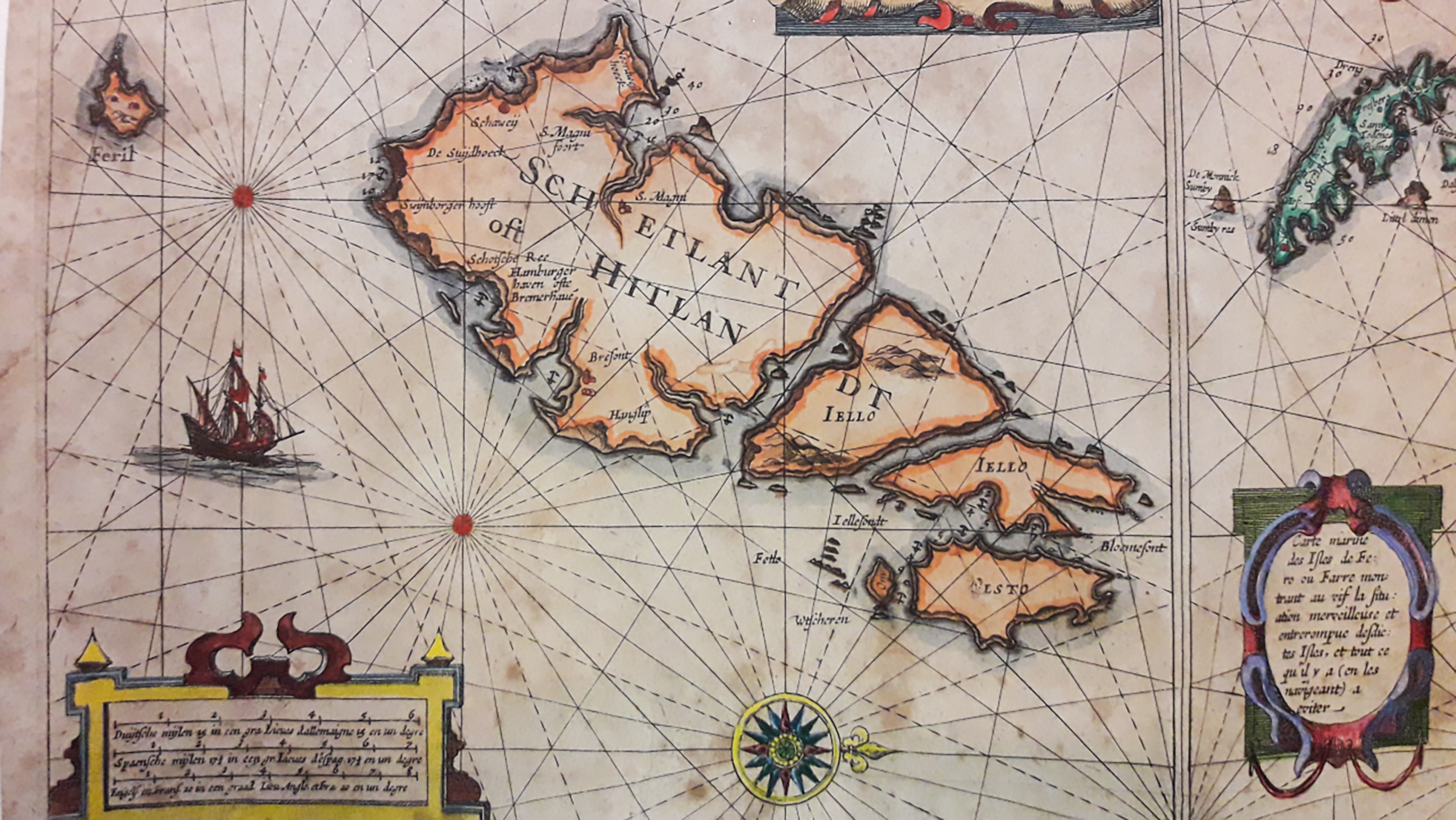Looking in from the Edge
A weathered gravestone of a Bremen merchant from 1573 - why is it in a remote bay on the Shetland Islands? There were already lively trade relations between Hamburg, Bremen, Shetland and Orkney in the 16th century - but historical letters not only document the trade in goods such as salt, fish and butter - they also paint a vivid picture of a rough time in which violence and sea robbery were part of everyday life. The special exhibition "Looking in from the Edge" invites visitors to the German Maritime Museum (DSM) / Leibniz Institute for Maritime History from March 24 to search for archaeological traces.
Seaworthiness was not enough as a quality for Hanseatic merchants in the 16th century to successfully bring trade goods to the Shetland and Orkney Islands. Documents on display in the exhibition "ALWAYS FURTHER - The Hanseatic League in the North Atlantic" show that the merchants needed a good dose of adventurousness, determination and courage. Political unrest, privateering and shipwreck were constant dangers. Letters from the Bremen State Archives, for example, vividly roll up the fate of the Bremen brothers Cord and Gerd Hemeling. Cord died aboard a merchant ship after an altercation with the ship's carpenter. In 1566, his brother Gerd was forced to give a ship to James Hepburn, Earl of Bothwell and Duke of Orkney - better known as the last husband of Scotland's Queen Mary Stuart. Hepburn was on the run after losing a battle in Scotland. Gerd Hemeling later requested compensation through various letters, but it was not granted.
Segebad Detken, a merchant from Bremen, was more fortunate and established a trouble-free trading relationship with Shetland in 1573, as evidenced by the inscription on his tombstone. According to this, he was active as a merchant on the islands for 52 years - and also found his final resting place there.
Dr. Bart Holterman, curator of the exhibition, sifted through many sources and selected the most exciting documents for the show. "The historical letters paint an accurate picture of the merchants of the time. After studying them more closely, I almost have the impression that I know the people." Holterman, like fellow curator Dr. Philipp Grassel, is working on the Looking in from the Edge (LIFTE) project. For it, researchers from Britain and Germany are examining how the Orkney and Shetland Islands were integrated into a larger economic area in early modern Europe.
Looking in from the Edge, as an extension of the permanent exhibition in the Cog Hall, now shows a new perspective of the people who traded on the islands north of Scotland as early as the 15th century. "We are making research visible and thus complementing the current permanent exhibition on Hanseatic history," Holterman says. He and Philipp Grassel visited excavations on Orkney and Shetland, established contacts with researchers there and borrowed various finds from the Shetland Museum and Archives and the Hanseatic Booth on Whalsay for the exhibition in Bremerhaven.
The everyday work of the researchers is to be made clear in the show. The drone image of a homestead in Orkney, which was continuously farmed for about a thousand years, functions as an excavation site. Visitors are invited to go there in search of archaeological clues and find evidence from different eras. In this way, the curators hope to create a sense of puzzling with fragments of the past.
Films show the methods of archaeology and a model demonstrates which ships merchants used to move around the North Sea in the 16th and 17th centuries. One thing is certain: cogs had already been replaced by more modern sailing ships by this time.
Also on display is one of the oldest books in the DSM library, dating from 1620, which contains a nautical map of the Shetland Islands with an exciting detail. One location is mapped as "Bremen or Hamburg Haven." "Curiously, we know little about this bay and its connection with the Hanseatic merchants of old. But that's lived and breathed in research; there are always new unanswered questions," Holterman says.
"Looking in from the Edge" from March 24 to 2024 in the Cog Hall.
Curator's tour with Bart Holterman, June 18, 3 p.m., Kogge Hall, participation included in museum admission, 6 euros, concessions 3 euros.

Bart Holterman (right) examines the gravestone of Segebad Detken, a merchant from Bremen who traded in Shetland for 52 years.
Photo: DSM / Paula Schiefer


Old nautical chart of the Shetland Islands showing the bay "Bremer or Hamburger Haven".
Photo: DSM
Ausstellungsansicht


One of the oldest books in the DSM library from the 17th century - the "Het licht der zee-vaert" with sea and ocean maps.
Credit: DSM / Annica Müllenberg

This content is provided by an external provider (YouTube). The privacy statements of YouTube apply. You can find more information at our Privacy Policy page
Click here to load the content.
Credit: Daniel Raboldt und Cameron Carroll

This content is provided by an external provider (YouTube). The privacy statements of YouTube apply. You can find more information at our Privacy Policy page
Click here to load the content.
Credit: Daniel Raboldt und Cameron Carroll

This content is provided by an external provider (YouTube). The privacy statements of YouTube apply. You can find more information at our Privacy Policy page
Click here to load the content.
Credit: Daniel Ramboldt und Cameron Carroll

